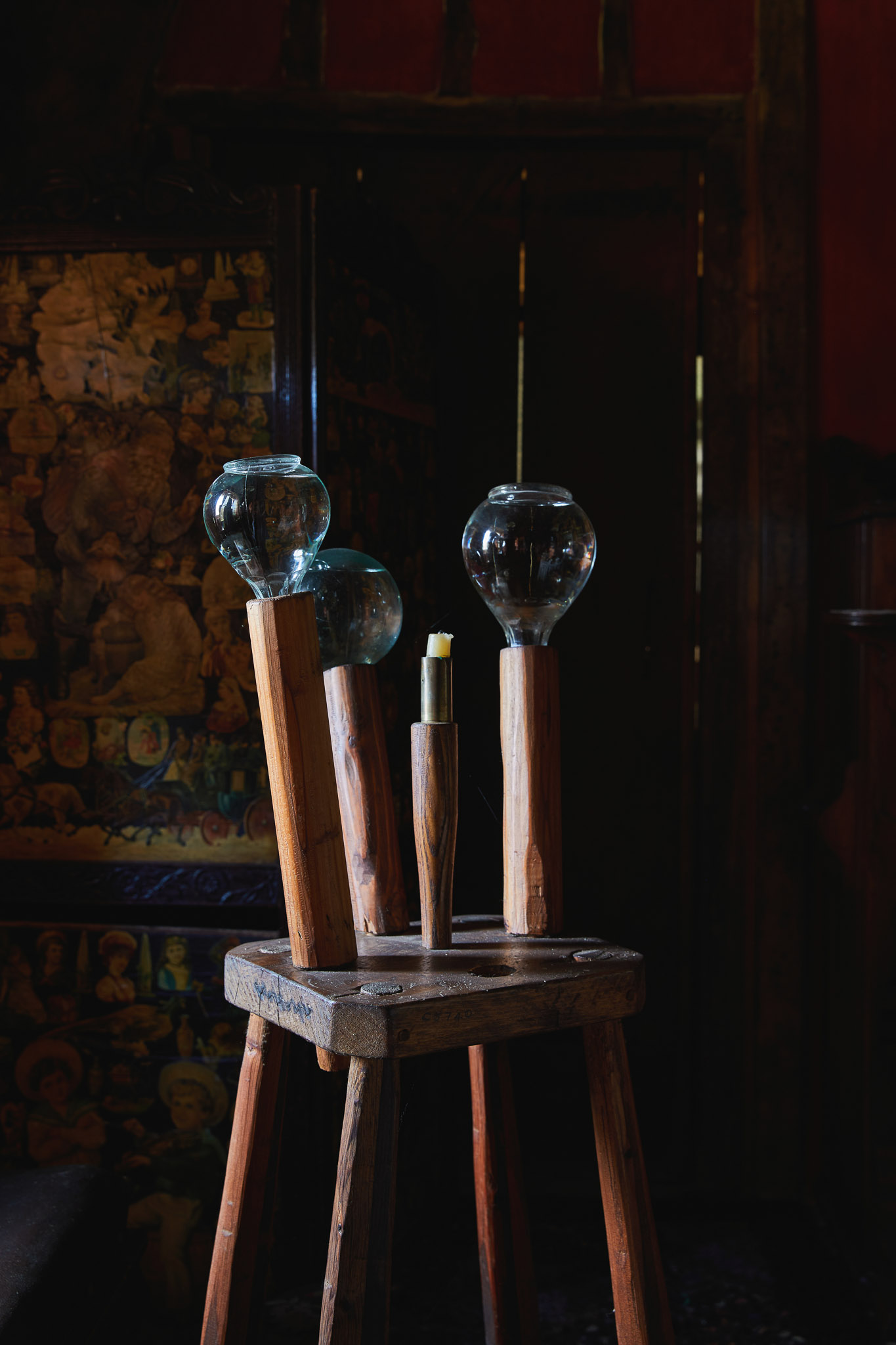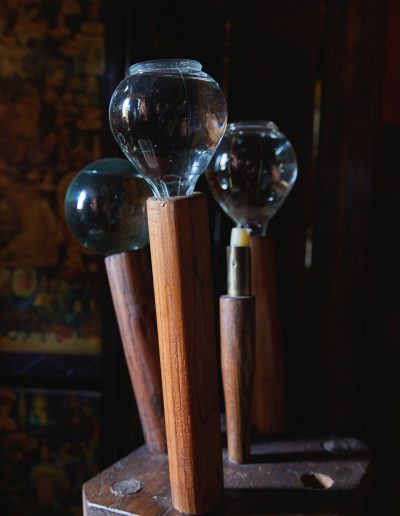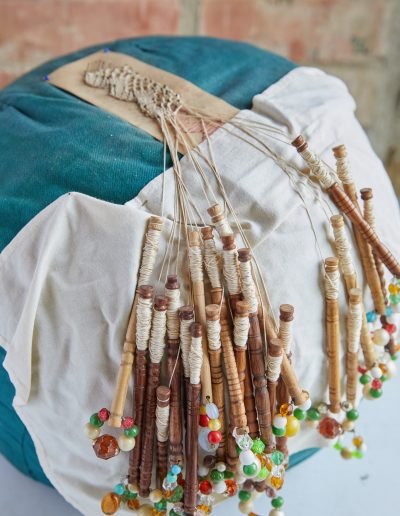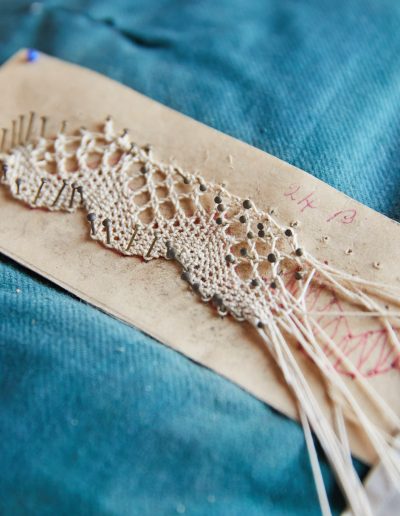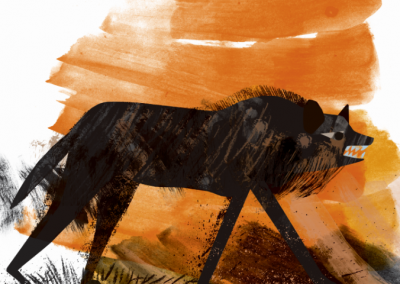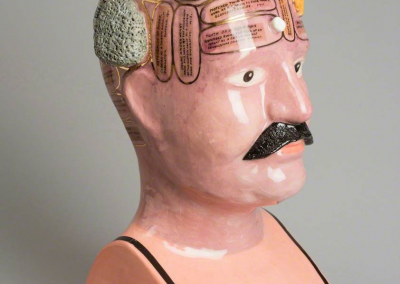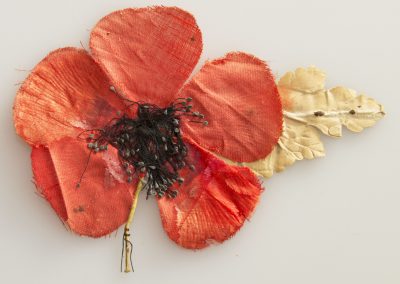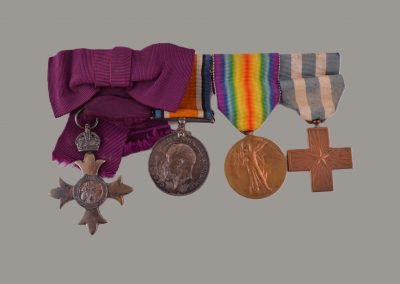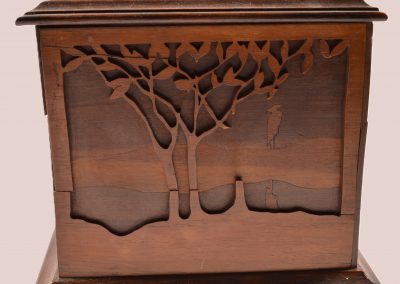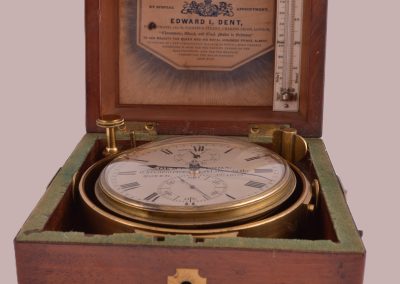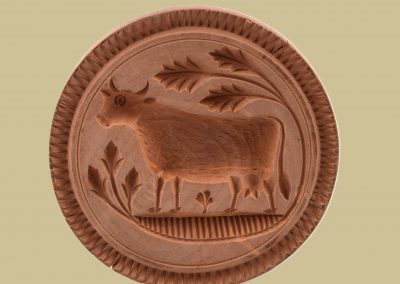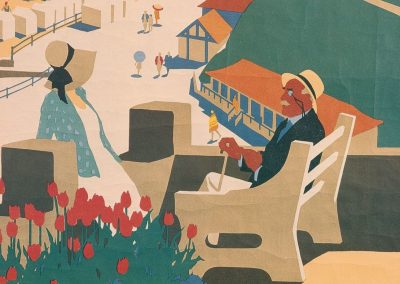Lacemakers’ candle stool lamp
Ryedale Folk Museum, North Yorkshire
Inside the parlour in the Victorian cottage at Ryedale Folk Museum you can find this unusual object. It was used by lacemakers to illuminate their delicate handiwork.
The water-filled flasks on the candle stool acted as lenses to concentrate light onto their lacemaking pillows. One candle was able to serve multiple laceworkers by being positioned in the centre of a number of flasks.
Lace was popular at various time during the Victorian era, used to adorn clothing and around the home. Some more complicated lacework required great skill and artistry.
Understanding the science of lighting
Candlelight is very dim (much dimmer than the lights we are used to using) and as it spread around the room, it would have become even dimmer. However, the water inside each glass orb acted like a lens, causing the light to be focused into a bright beam. Lacemakers seated nearest to the candle would have had a much brighter light, allowing them to see the fine lace more clearly.
If the lacemaker sat across the room, further from the candle, then the bright beams of light would still be bright enough for them to work.
Light spreads out in straight lines from a light source. The lacemakers would need to make sure they didn’t block the beam of light as that would create a shadow which might make it too dark for the person behind to work.
Watch the video to find out more and discuss the object
Watch The Video With Subtitles
Talking Points
Do you really think that the glass containers held melted snow? Why might snow be considered to be pure?
Why is the candle in the photo unlikely to be at the best height for the lace-makers using it? What height candle would you use in order to transmit light onto your work?
Do you think this would have been an expensive object? Why / why not?
Can you think of any other people in Victorian times who might have liked a lamp like this one?
Can you think of any other objects that use lenses in this way?
In the Classroom
Discuss
More experienced lace makers were likely to be older. However, older people have eyes that work less well than younger people.
Where would you sit the older lace makers? Where would you sit the younger lace makers?
What effect might this have on the eyesight of the young lacemakers?
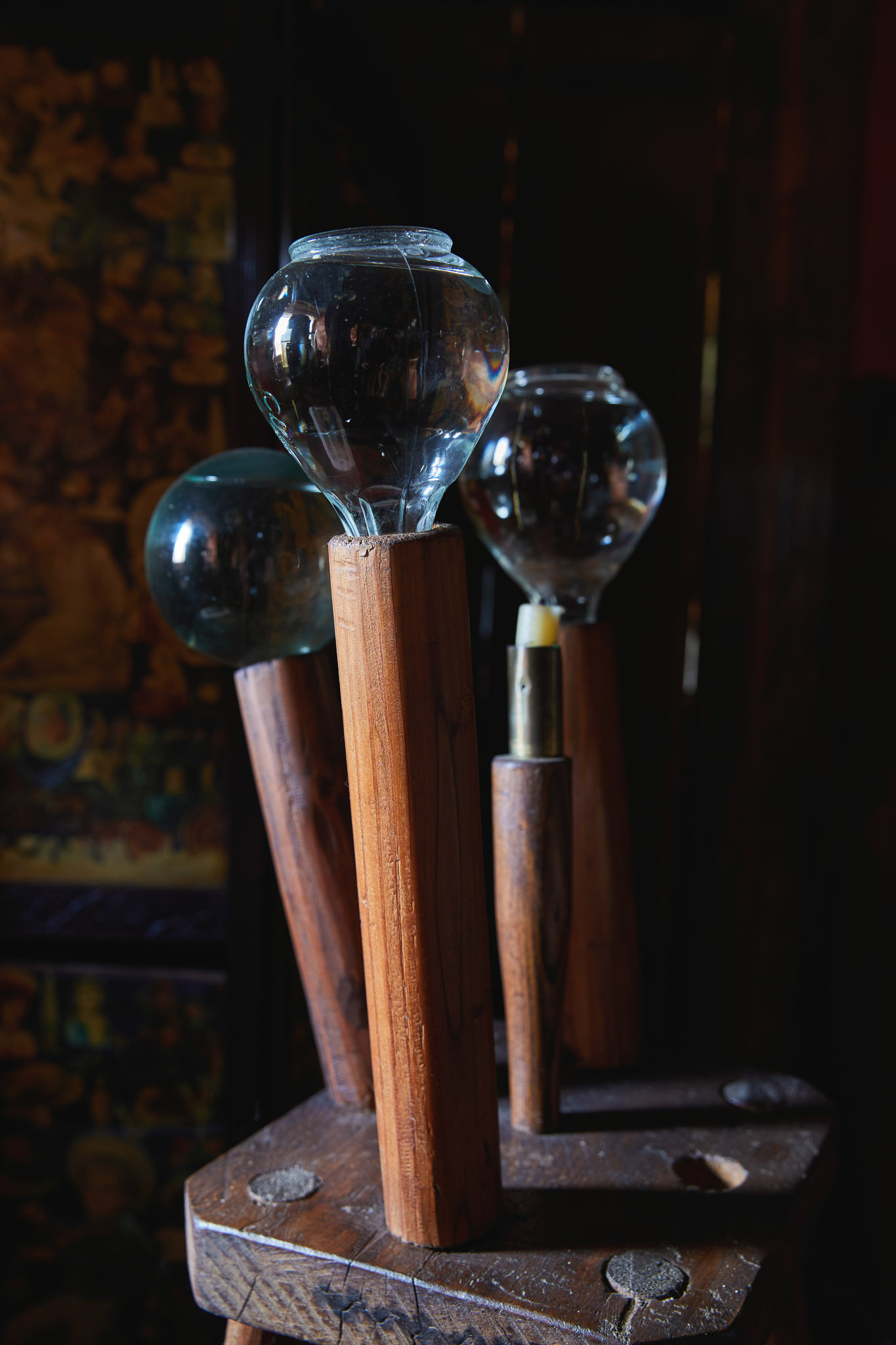
Hands on History
You can explore 20 heritage buildings including the Victorian Cottage at Ryedale Folk Museum.
School pupils can explore what life was like during Victorian times for children, with an interactive virtual lesson with a Victorian schoolteacher on Ryedale Folk Museum’s website.
Museum Location
Associated Objects

